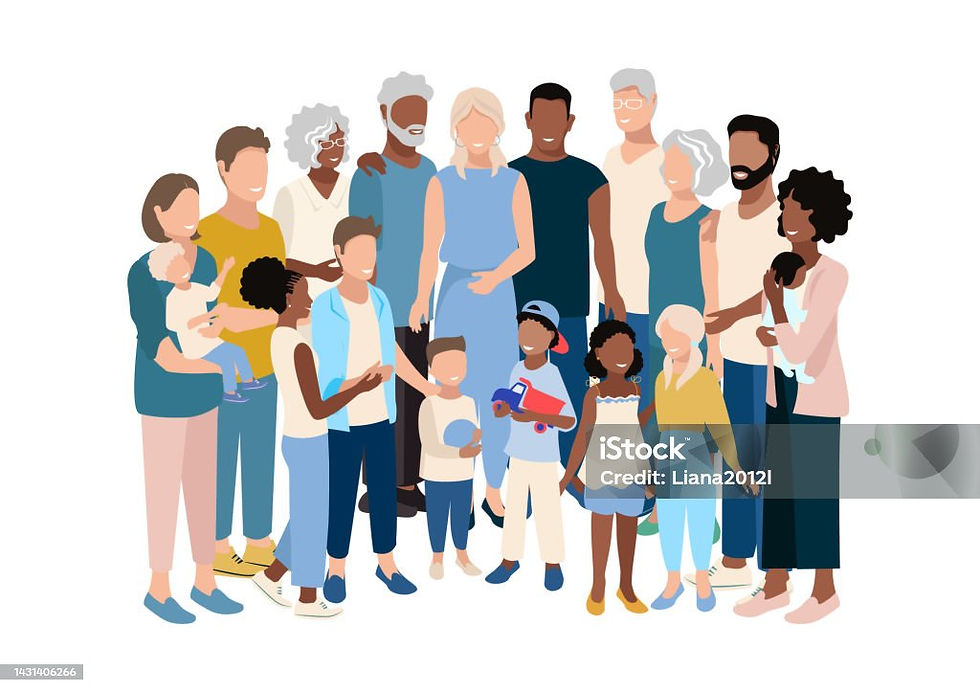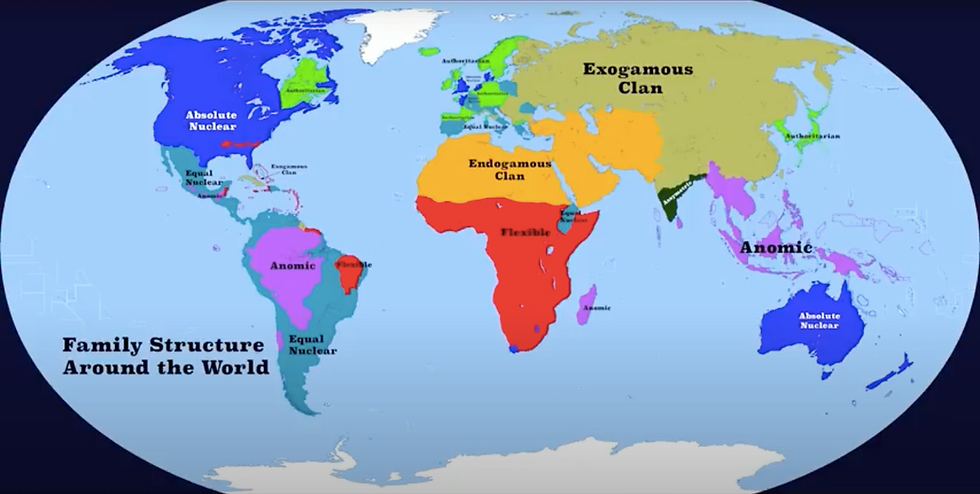
Families are the unit of any society, as they are the provider of social individuals that conform to a moral code and present all the qualities that define the human being: rationality, critical thinking, elevated language, etc. In the evolution of civilization, families organized themselves differently, as it was presented in Part One of this article, in which the Exogamous Types of Family Structures were explained. In this part we will continue with the explanation of the rest of the family structures.

The Endomous Family Structures are defined by the fact that the individuals marry within their social unit, usually their second or third degree cousins. Ensuring and preserving the inclusiveness of a specific group was and remains the primary goal of the endogamy. This type of family structure is scarce compared to the Exogamous families, due to varied religious beliefs and laws regarding incest.
The Endogamous Clan is also a clan structure, that differs from the Exogamous Clan, because there isn’t tension between the brothers due to the inbreeding. The upbringing and discipline doesn’t just fall on the father, but also on the uncles, grandfathers and cousins. Also, due to the blood relations, the women in this family structure are treated better than their counterparts in the Exogamous Community. This structure can be found in the Arab world, Turkey, Iran, Afghanistan, Pakistan, Azerbaijan, etc.
The Asymmetric Family is endogamous, with marriage encouraged between children of a brother and a sister, but with a prohibition on marriage between children of two brothers, or children of two sisters. This structure is prevalent in southern India.
The Anomic Family or the "faulty nuclear" as Todd calls it is the structure in which the rules are non-existent. One can have a nuclear family, one can live with their parents, one can marry within their clan, others can marry outside their clan. It tends to produce strong village solidarity. Principal regions in which this family types is found are Burma, Cambodia, Laos, Thailand, Malaysia, Indonesia, South-American Indian cultures, etc.
The Flexible System is found in Africa and is characterized by instability of the household and polygyny. Emmanuel Todd declares that “the Dark Continent, an area of fundamental importance in anthropological research, remains very poorly documented from the point of view of family structure.”
These are the types of family structures identified by Emmanuel Todd. One can easily understand how they influenced the development of societies and the course of history. It is not a coincidence that nazism thrived in familial structures where there was a great sense of nationalism due to the ancestry line or that communism developed in countries where the father is the figure of power and authority or that the instability of the household in Africa isn’t related to the low level of development and the continuous wars between countries.
Today’s families are different though, due to globalization. As the influence of the Western world over media has grew within the past century, most of the world has started to adopt the Egalitarian Nuclear family or Absolute Nuclear family, in spite of the traditional familial structures in those regions. This can be seen all over the world in countries such as Japan, Poland, India, etc. where the former families structures fade away in history, only the elderly remembering them. This ought to bring societal changes, whether in the near future or in the distant future, no one can know for sure. What is certain is that family structures tell an incredible story about the state of societies and about the course of history and will continue to do so.
Sources:
u “The explanation of ideology: Family Structures and Social Systems” by Emmanuel Todd
Images:


